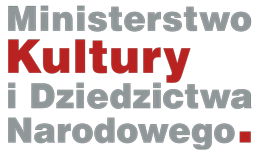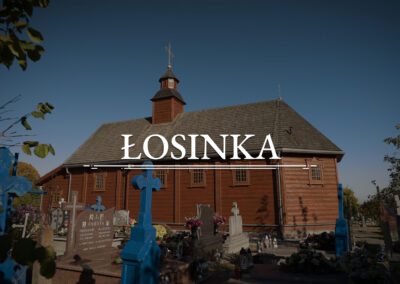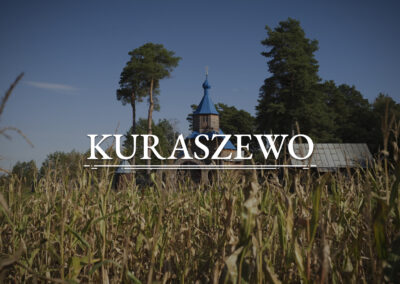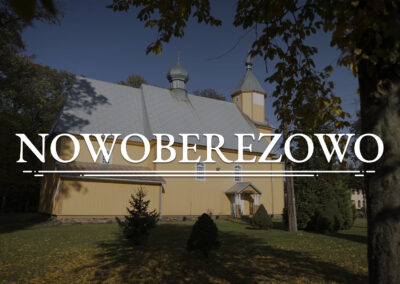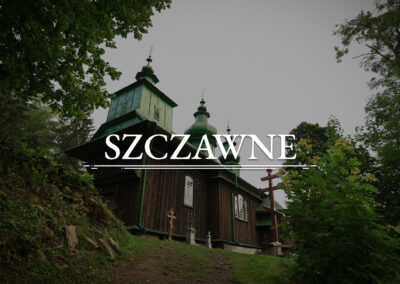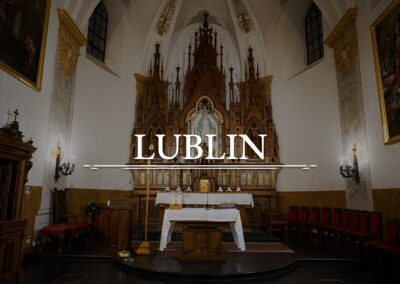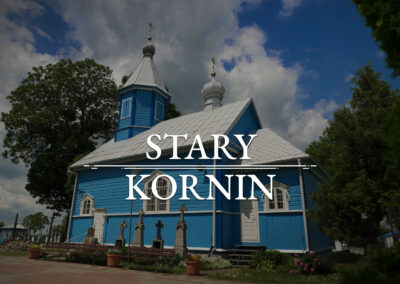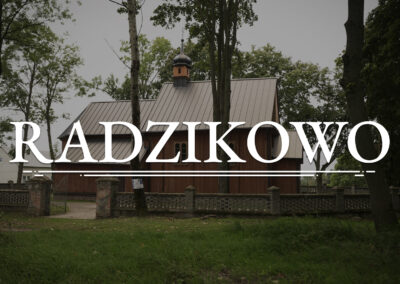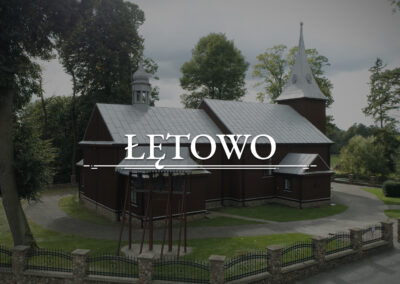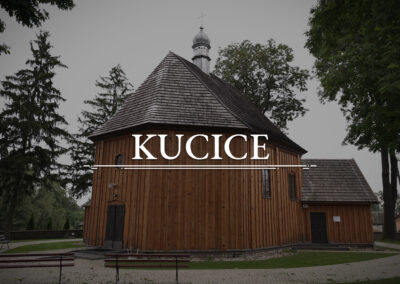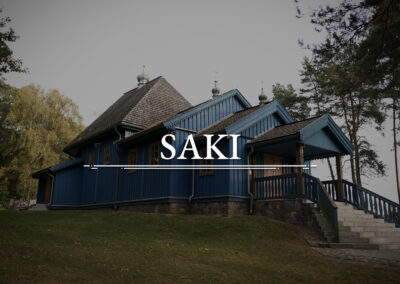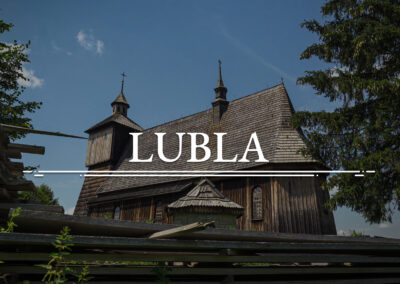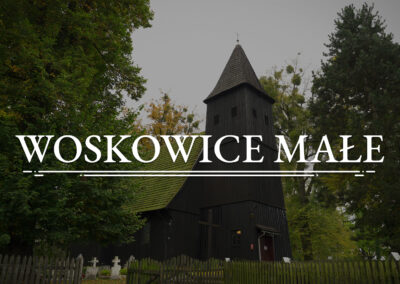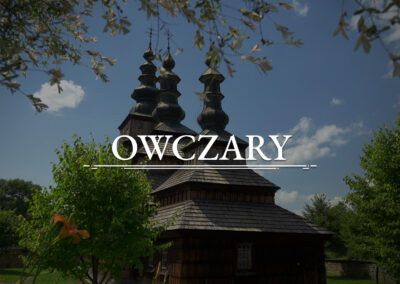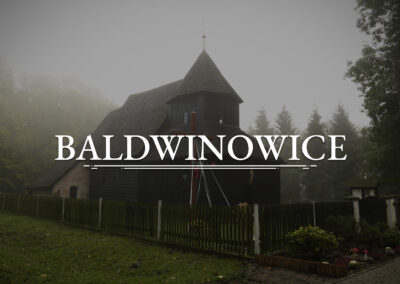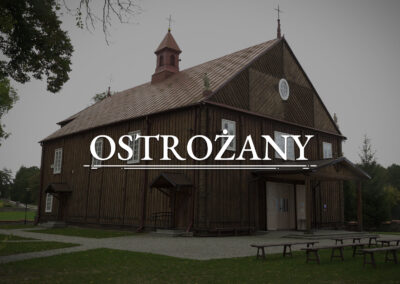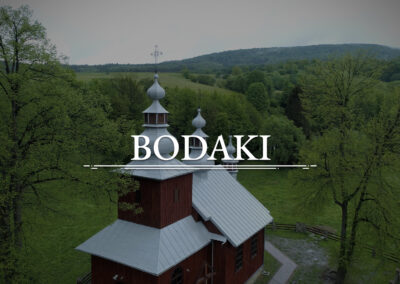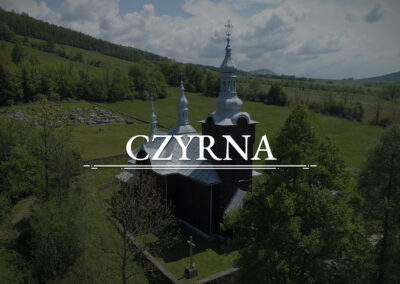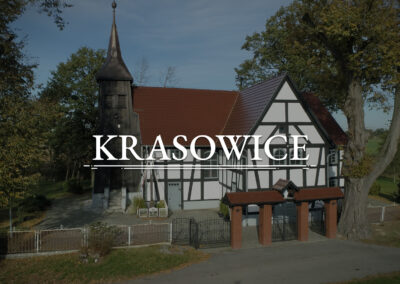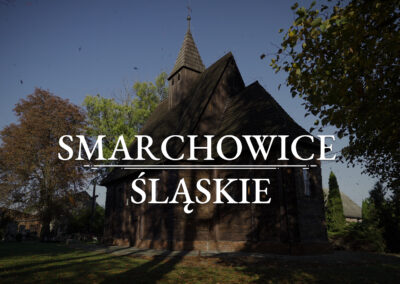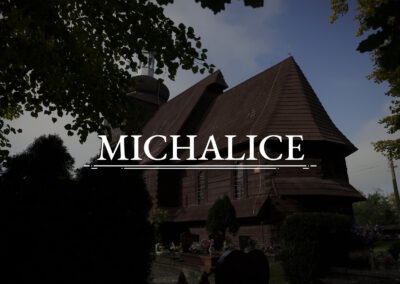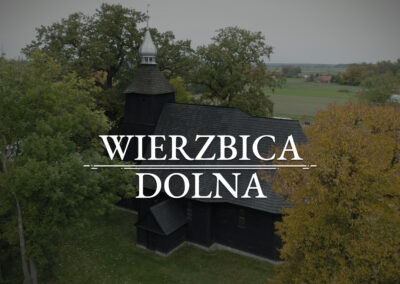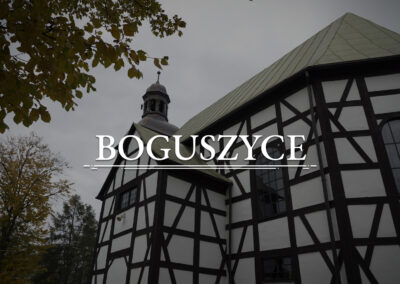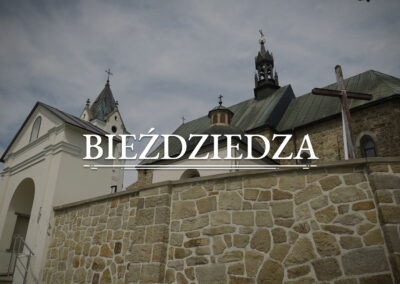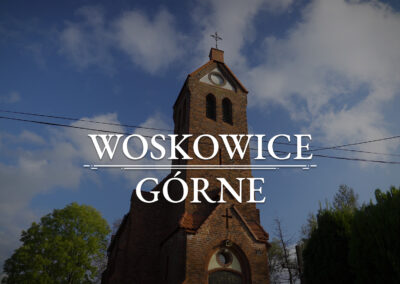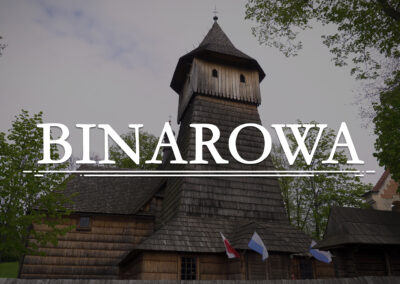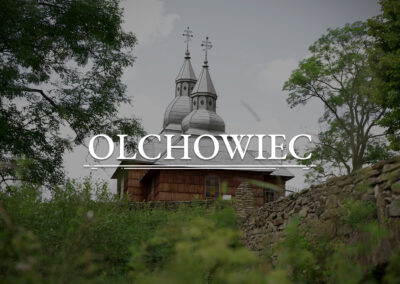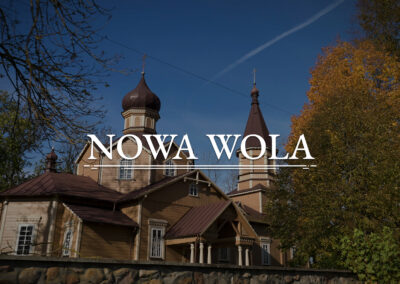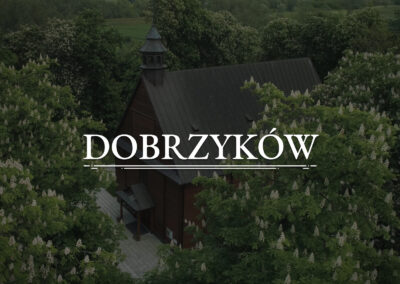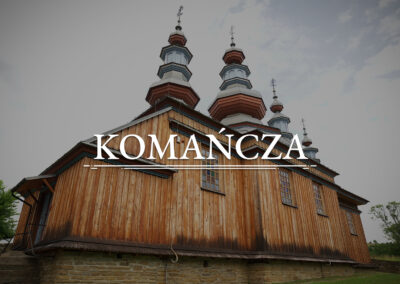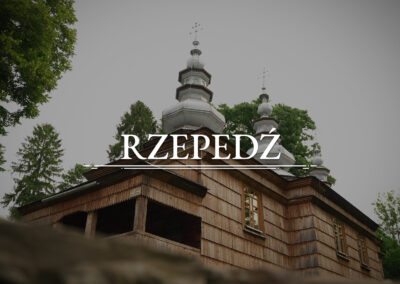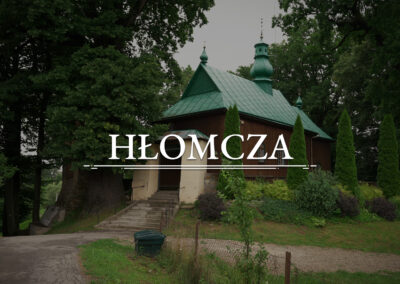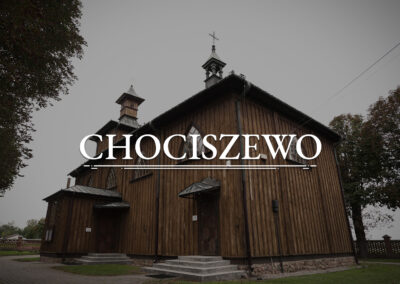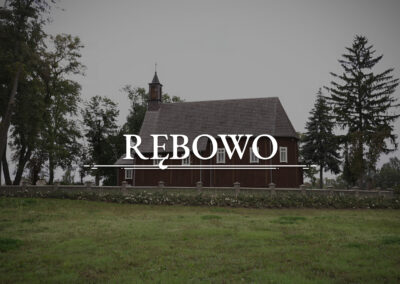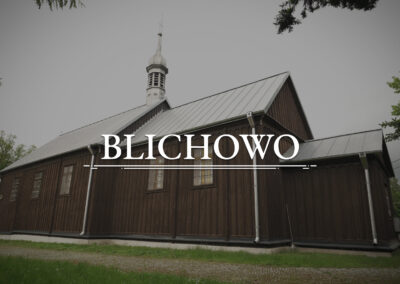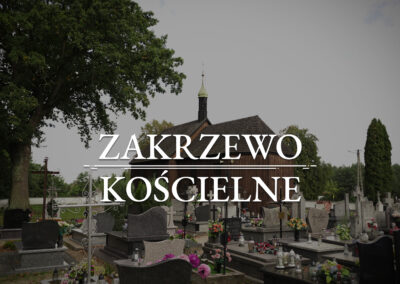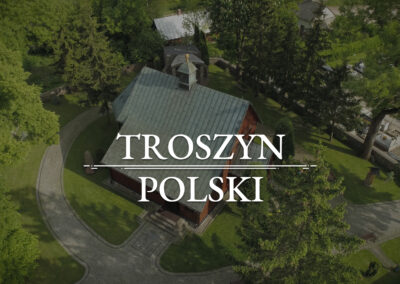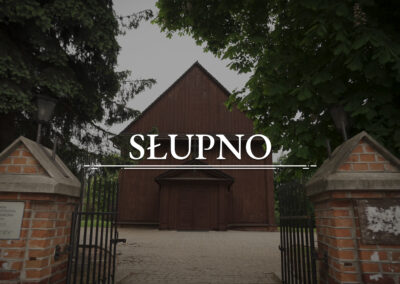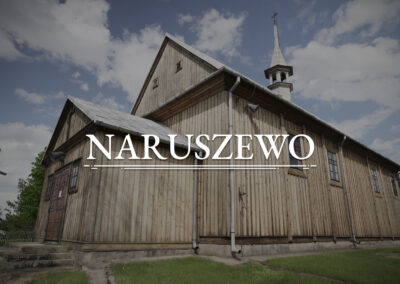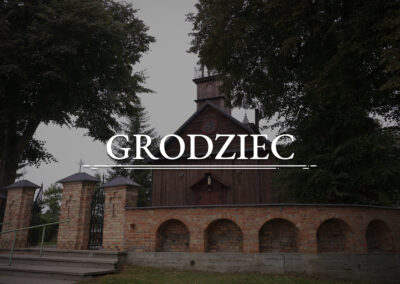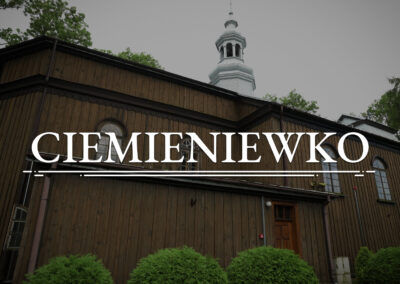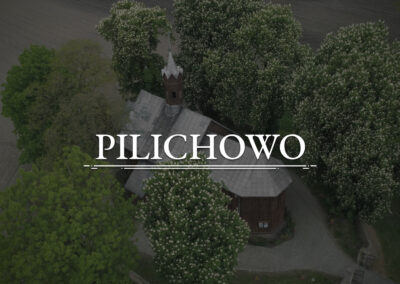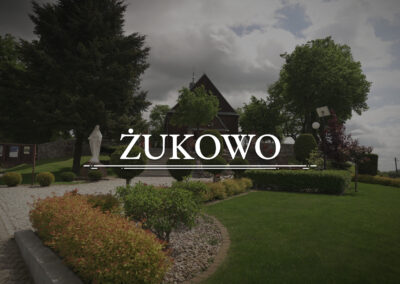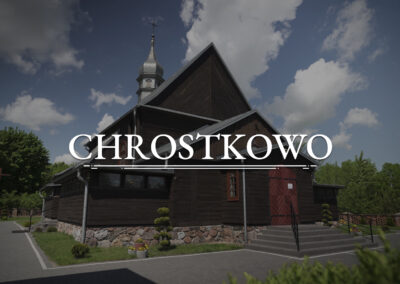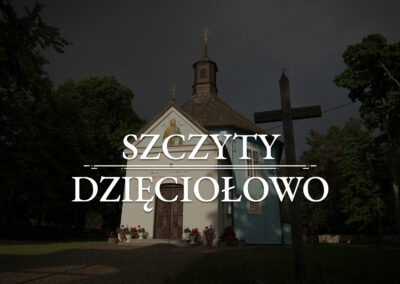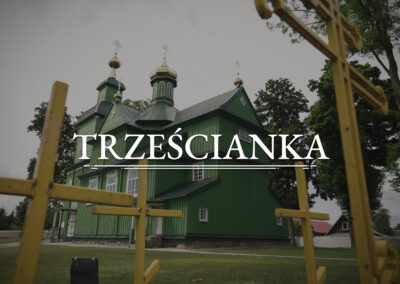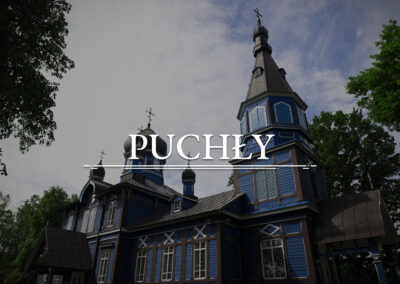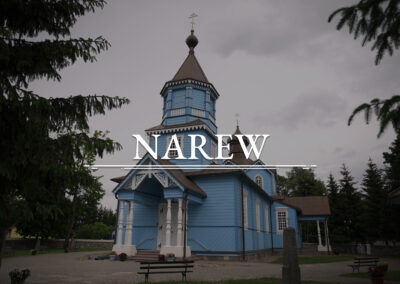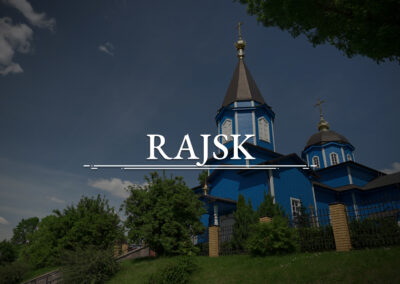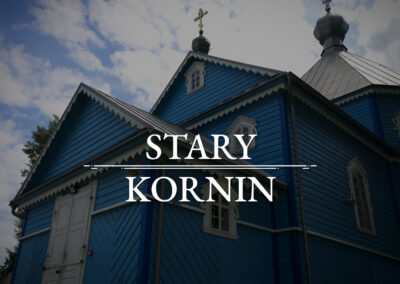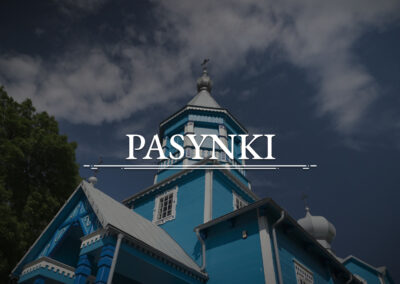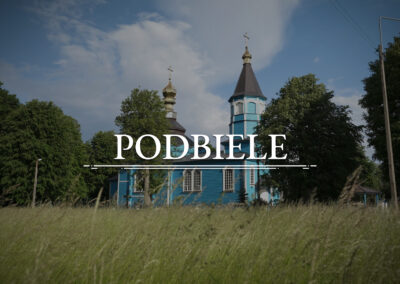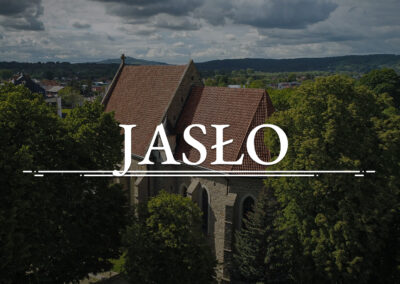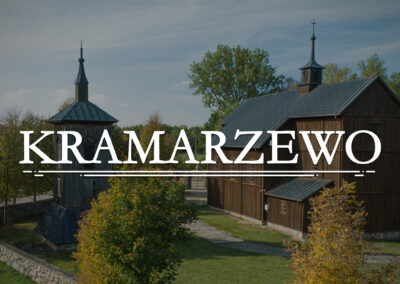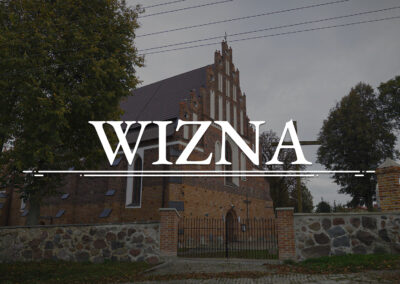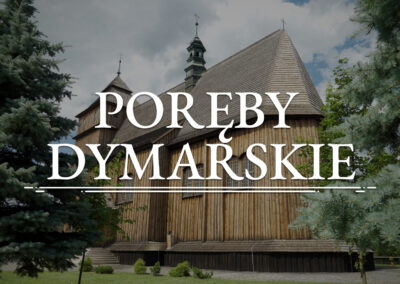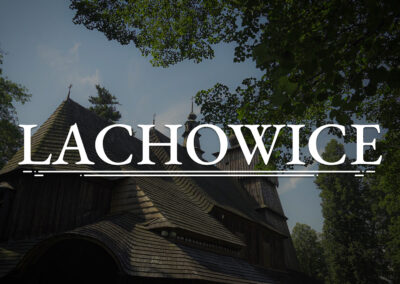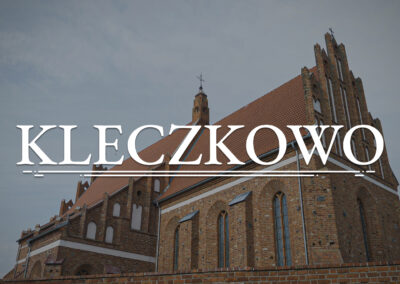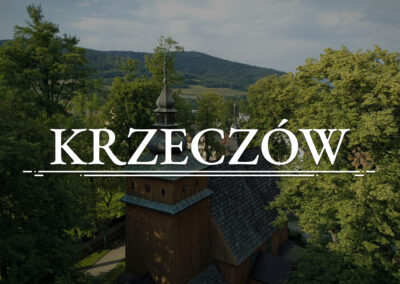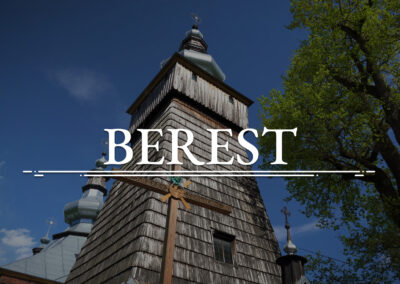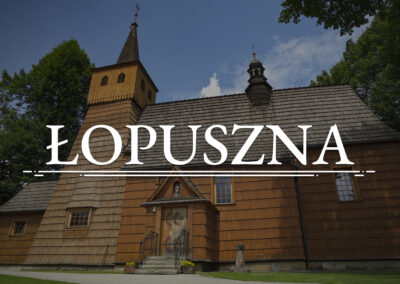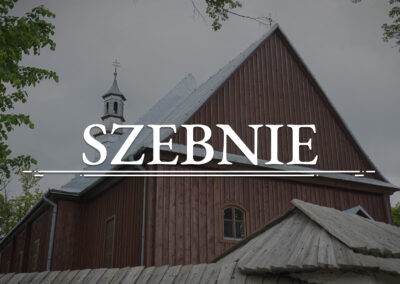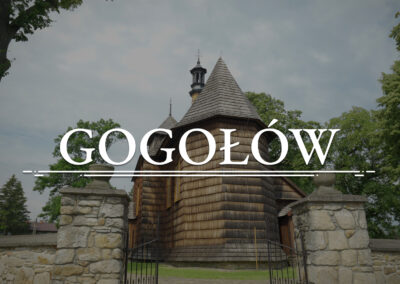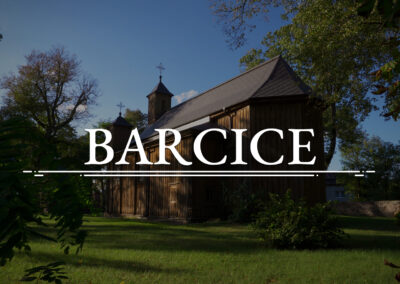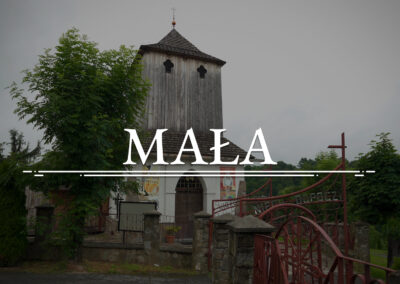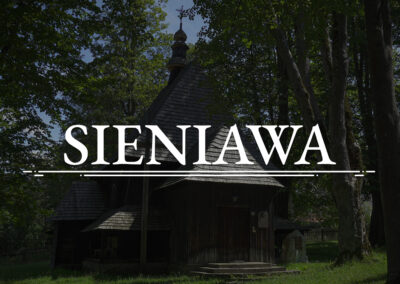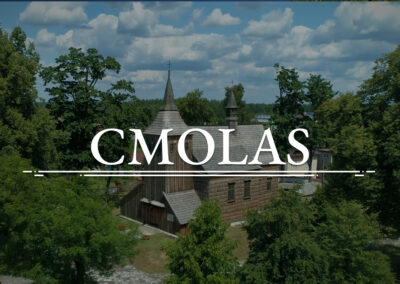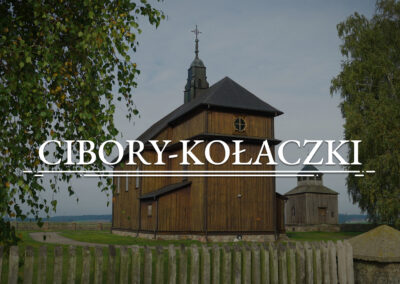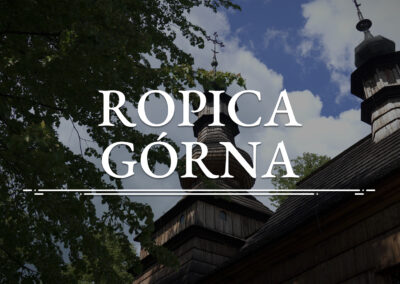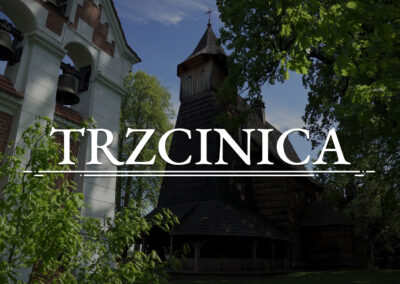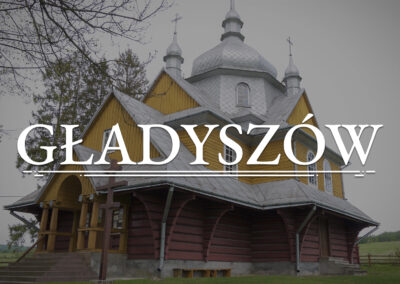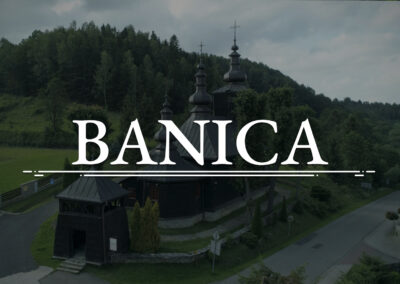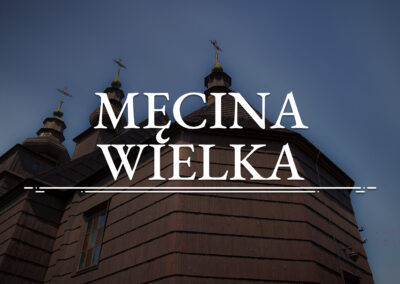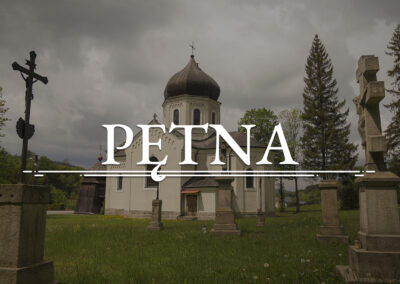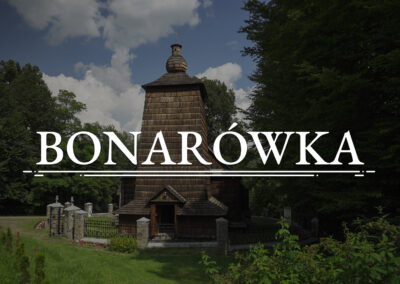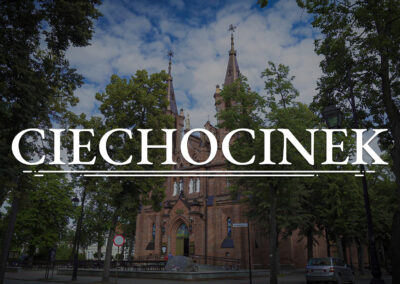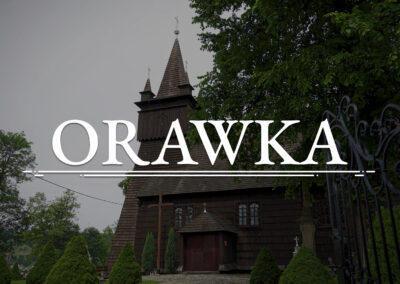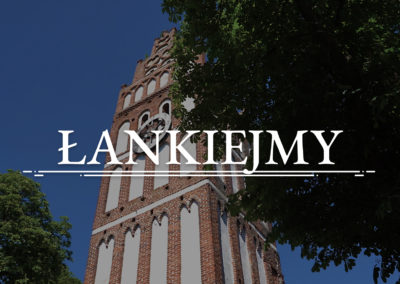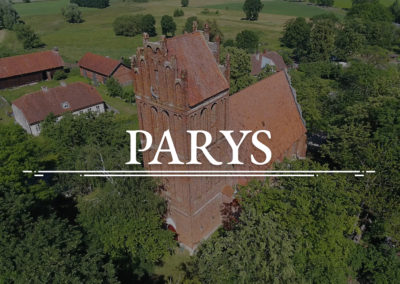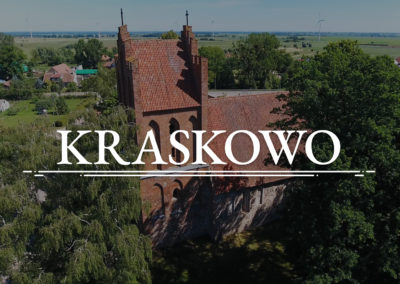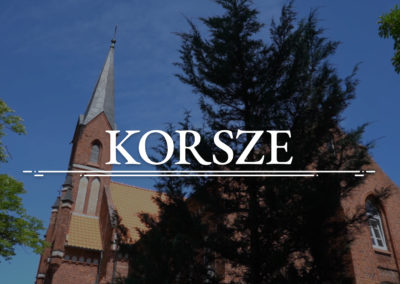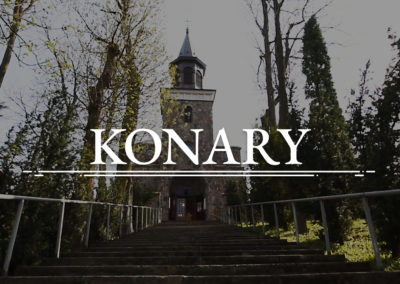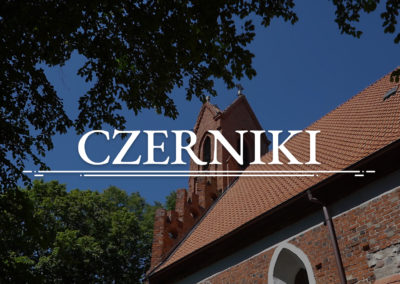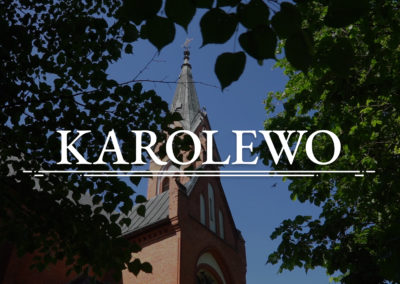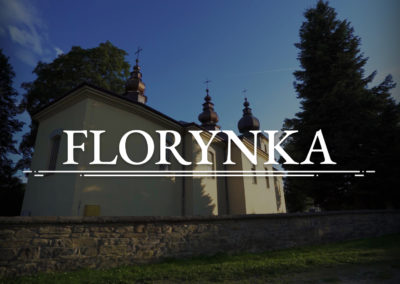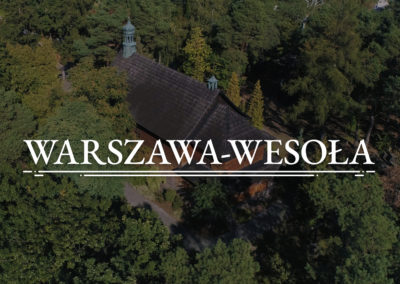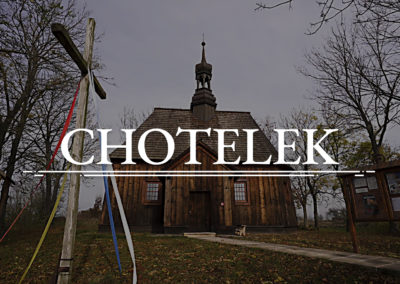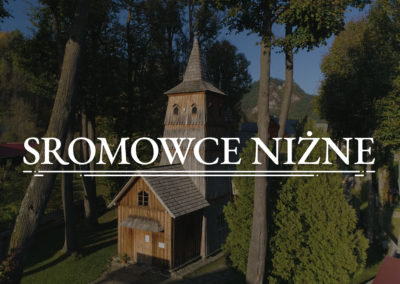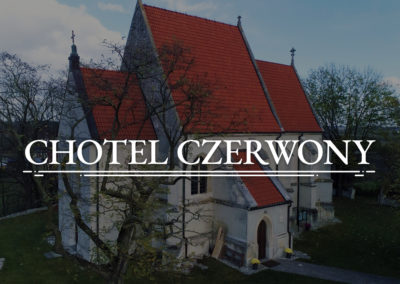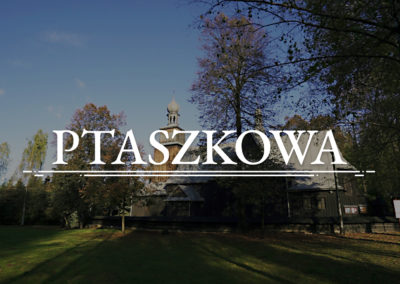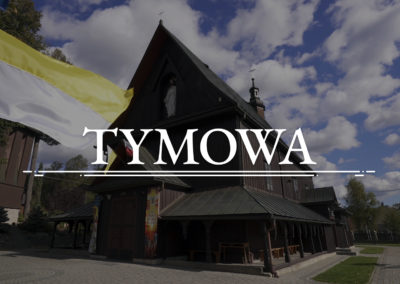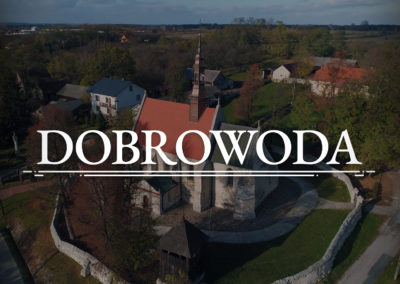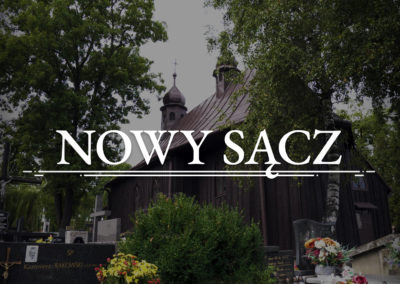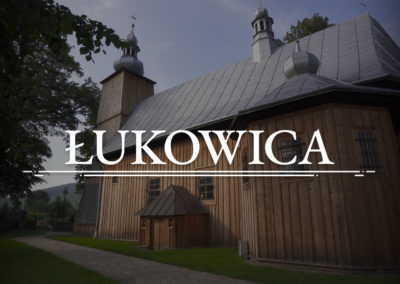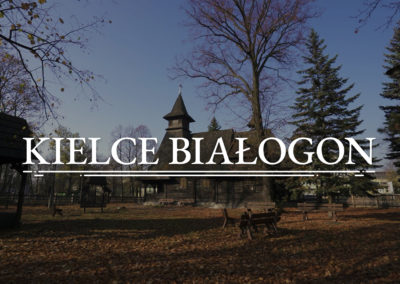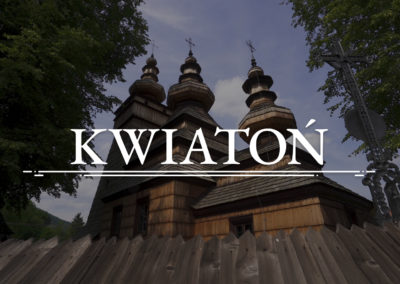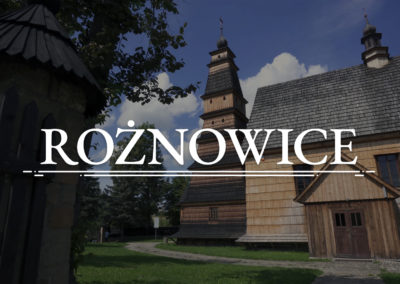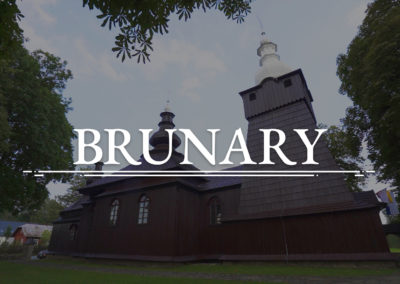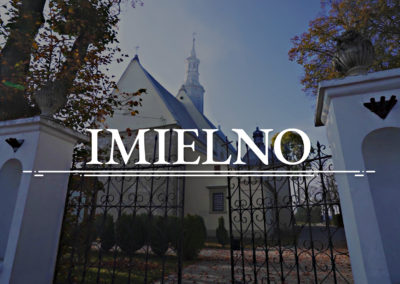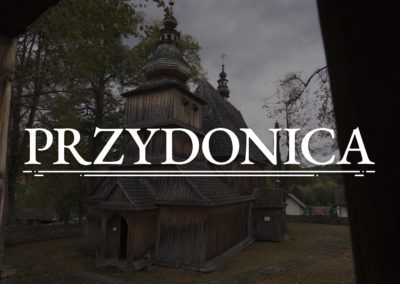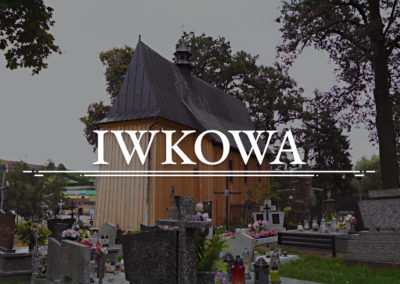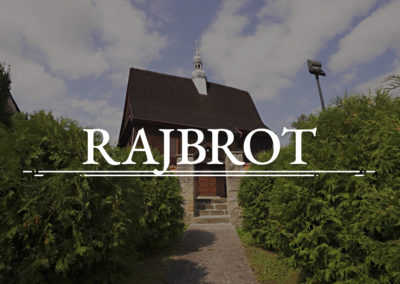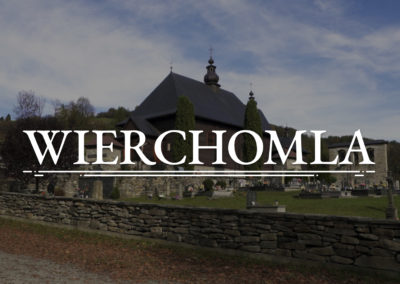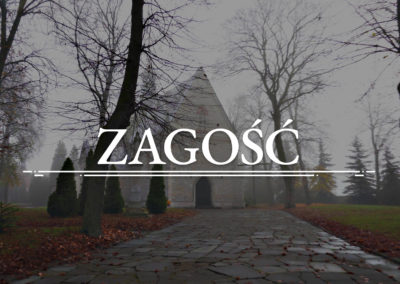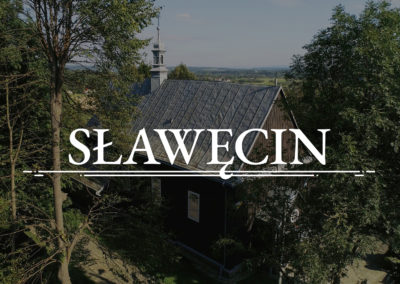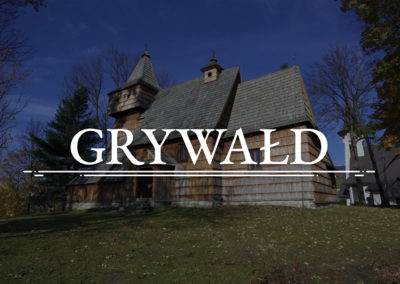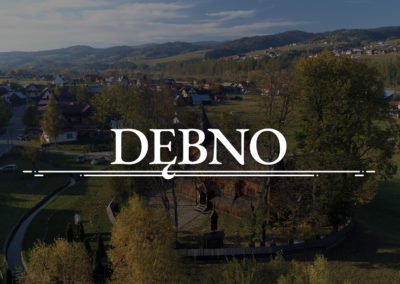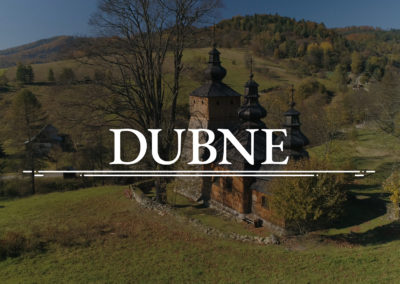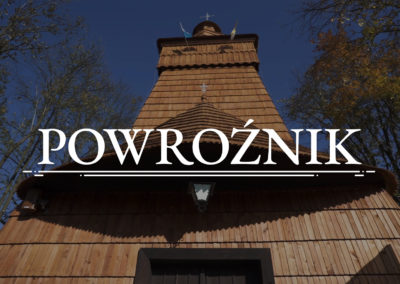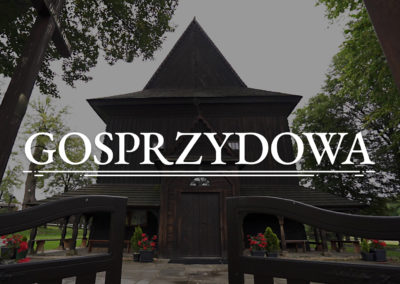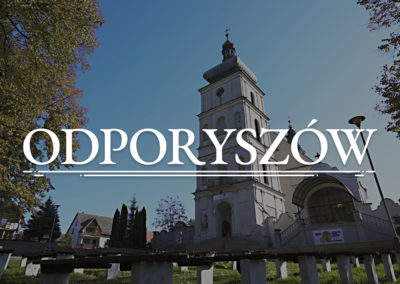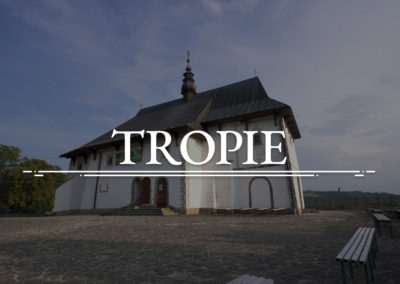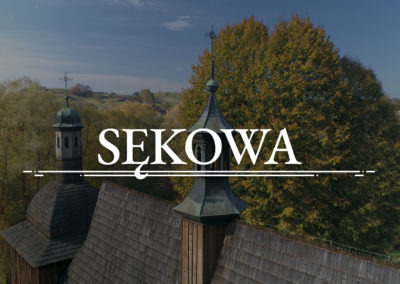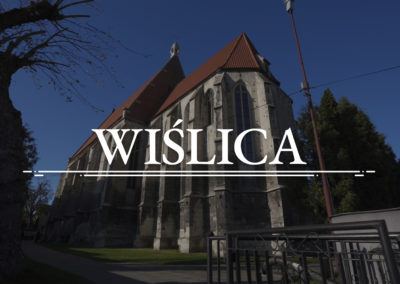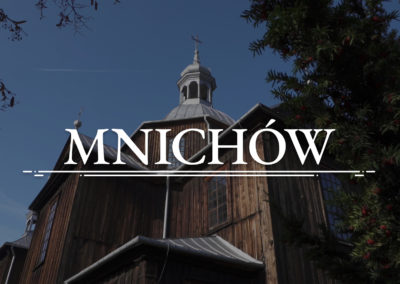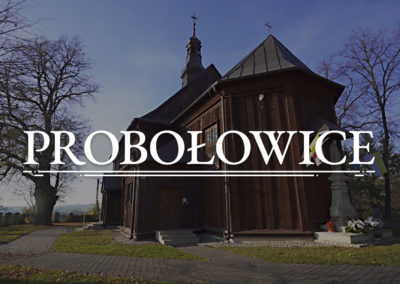DOBRZYKÓW - Church of the Nativity of the Blessed Virgin Mary
According to the study by Dr Bogumiła Zalewska – Opasińska, it began most likely in the second half of the 14th century. Historical records mention a local parish priest and his activity in 1453. The first church was built here in 1489. For some time the parish remained a part of another one in Radziwie. Its status changed in the 17th century together with a decision of Stanisław Łubieński, the bishop of Płock.
3D WALKHistory
CHURCH
IN DOBRZYKÓW
In the vicinity of the scenic bend of the Vistula, only ten kilometres away from Płock, you can encounter a true gem of sacral architecture. This wooden church has a fascinating history.
According to the study by Dr Bogumiła Zalewska – Opasińska, it began most likely in the second half of the 14th century. Historical records mention a local parish priest and his activity in 1453. The first church was built here in 1489. For some time the parish remained a part of another one in Radziwie. Its status changed in the 17th century together with a decision of Stanisław Łubieński, the bishop of Płock. It coincided with the construction of a new church. The funds for the construction were provided by Katarzyna Tarnowska, the wife of the cup-bearer of Gostyń. The sacristy and the treasure room, which lasted until today, date back to this construction.
In the 18th century, the church was rebuilt with the use of the elements coming from the previous one. This was commemorated by a special plaque that you can see above the entrance to the sacristy. Józef Sołłohub, the governor of the Witebsk province at that time, was responsible for the reconstruction. On the rood beam you can see the date 1774 being the year when it happened. 32 years later the church was consecrated.
In the long and rich history of the parish it is worth mentioning, for example, the fact that the parish priest of Dobrzyków helped the November insurgents. Father Konstanty Plejewski, who held the reins of the parish for over forty years, donated silver liturgical objects to supply them with more weapons.
The next parish priest, Father Konrad Tałajewski, ministered to the spiritual needs of the January insurgents. He organized the ceremonial burial of the fallen in two battles in 1863. During World War 1, the parish in Dobrzyków organised fundraising to feed children and supported the local charity nursery school. During this conflict, German soldiers requisitioned three church bells. The oldest dated back to the 16th century.
During the interwar period, it was possible to build the manor-style rectory and endow new bells. Unfortunately, the Nazi occupation led to the arrest of the parish priest, who was later taken to the Dachau concentration camp. The Nazis requisitioned the bells, pulled town the bell tower, destroyed the new roof, the windows and turned the rectory into lodgings of the gendarmerie. Many historical elements of the interior were damaged, many valuables went missing, including liturgical objects.
Right after the war, thanks to the efforts of Stanisław Godlewski, the parish priest, the parish slowly came back to life. The furnishings were supplemented and the real property was repaired. Further repairs took place in the seventies. They revealed the preserved elements of the church from the 15th century. Right now the church has been well taken care of for years. The most recent works took place in the 21st century.
The wooden structure has one nave and five altars. The main altar dates back to the 18th century and holds the picture of Our Lady with the Child, called the Lady of Dobrzyków, which was executed the 17th century. According to the sources, for centuries it has been a place of pilgrimage of the faithful.
The side altars allows us to admire, among others, the sculpture of God the Father from the 17th century, four angels and St Michael the Archangel, St Barbara, Pieta as well as St Catherine and St Margaret. It is worth paying attention to the late Renaissance pulpit from the end of the 16th century.
In the church there are also three epitaphial plaques. The first one is dedicated to Teodor Dembowski, senator and castellan of the Kingdom of Poland. The second was paid for by Błażej Walenty Zakrzewski, the landlord of Strzemeszno. It commemorates his wife, Tekla from the Gliński family. The third epitaph with Jelita coat of arms was dedicated to Teodor Sariusz Dembowski, who died in 1855.
According to the study by Dr Bogumiła Zalewska – Opasińska, it began most likely in the second half of the 14th century. Historical records mention a local parish priest and his activity in 1453. The first church was built here in 1489. For some time the parish remained a part of another one in Radziwie. Its status changed in the 17th century together with a decision of Stanisław Łubieński, the bishop of Płock. It coincided with the construction of a new church. The funds for the construction were provided by Katarzyna Tarnowska, the wife of the cup-bearer of Gostyń. The sacristy and the treasure room, which lasted until today, date back to this construction.
In the 18th century, the church was rebuilt with the use of the elements coming from the previous one. This was commemorated by a special plaque that you can see above the entrance to the sacristy. Józef Sołłohub, the governor of the Witebsk province at that time, was responsible for the reconstruction. On the rood beam you can see the date 1774 being the year when it happened. 32 years later the church was consecrated.
In the long and rich history of the parish it is worth mentioning, for example, the fact that the parish priest of Dobrzyków helped the November insurgents. Father Konstanty Plejewski, who held the reins of the parish for over forty years, donated silver liturgical objects to supply them with more weapons.
The next parish priest, Father Konrad Tałajewski, ministered to the spiritual needs of the January insurgents. He organized the ceremonial burial of the fallen in two battles in 1863. During World War 1, the parish in Dobrzyków organised fundraising to feed children and supported the local charity nursery school. During this conflict, German soldiers requisitioned three church bells. The oldest dated back to the 16th century.
During the interwar period, it was possible to build the manor-style rectory and endow new bells. Unfortunately, the Nazi occupation led to the arrest of the parish priest, who was later taken to the Dachau concentration camp. The Nazis requisitioned the bells, pulled town the bell tower, destroyed the new roof, the windows and turned the rectory into lodgings of the gendarmerie. Many historical elements of the interior were damaged, many valuables went missing, including liturgical objects.
Right after the war, thanks to the efforts of Stanisław Godlewski, the parish priest, the parish slowly came back to life. The furnishings were supplemented and the real property was repaired. Further repairs took place in the seventies. They revealed the preserved elements of the church from the 15th century. Right now the church has been well taken care of for years. The most recent works took place in the 21st century.
The wooden structure has one nave and five altars. The main altar dates back to the 18th century and holds the picture of Our Lady with the Child, called the Lady of Dobrzyków, which was executed the 17th century. According to the sources, for centuries it has been a place of pilgrimage of the faithful.
The side altars allows us to admire, among others, the sculpture of God the Father from the 17th century, four angels and St Michael the Archangel, St Barbara, Pieta as well as St Catherine and St Margaret. It is worth paying attention to the late Renaissance pulpit from the end of the 16th century.
In the church there are also three epitaphial plaques. The first one is dedicated to Teodor Dembowski, senator and castellan of the Kingdom of Poland. The second was paid for by Błażej Walenty Zakrzewski, the landlord of Strzemeszno. It commemorates his wife, Tekla from the Gliński family. The third epitaph with Jelita coat of arms was dedicated to Teodor Sariusz Dembowski, who died in 1855.
DOBRZYKÓW - Church of the Nativity of the Blessed Virgin Mary
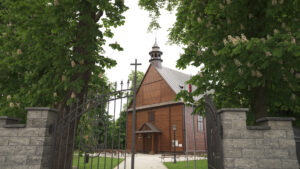
COFUNDED BY THE MINISTER OF CULTURE AND NATIONAL HERITAGE
ORIGINATING FROM CULTURE PROMOTION FUND

